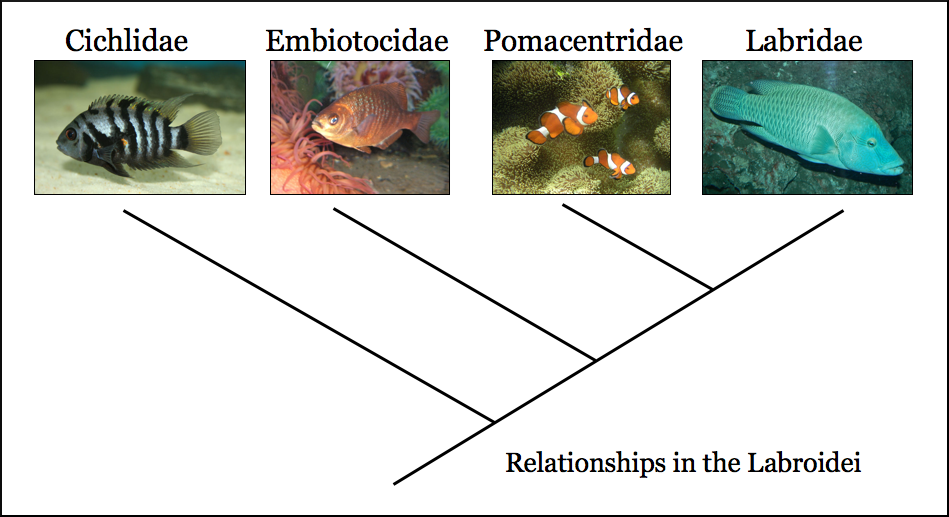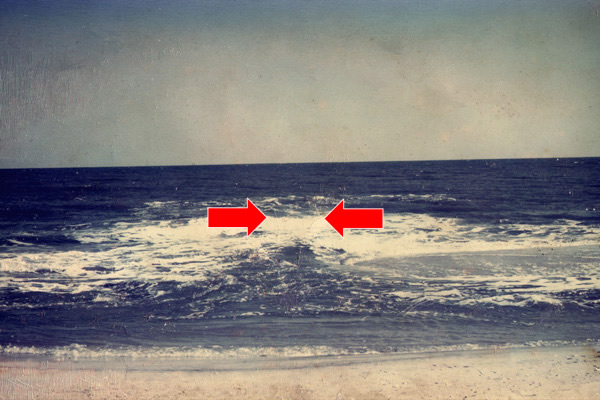|
Eretmodine
Eretmodini is a tribe of African cichlids. It contains five species of freshwater fish endemic to Lake Tanganyika. They are small fish with reduced swim bladders that are found near the bottom in the turbulent, coastal surf zone.Smith, M.P. (1998). Lake Tanganyikan Cichlids, p. 10. They are mouthbrooder Mouthbrooding, also known as oral incubation and buccal incubation, is the care given by some groups of animals to their offspring by holding them in the mouth of the parent for extended periods of time. Although mouthbrooding is performed by a va ...s. Genera There are three genera, consisting of five species in the tribe: *'' Eretmodus'' Boulenger, 1898 *'' Spathodus'' Boulenger, 1900 *'' Tanganicodus'' Poll, 1950 References External links * http://ctdbase.org/detail.go?type=taxon&acc=319068 * Pseudocrenilabrinae * Cichlid fish of Africa {{cichlid-stub ... [...More Info...] [...Related Items...] OR: [Wikipedia] [Google] [Baidu] |
Cichlid
Cichlids are fish from the family Cichlidae in the order Cichliformes. Cichlids were traditionally classed in a suborder, the Labroidei, along with the wrasses ( Labridae), in the order Perciformes, but molecular studies have contradicted this grouping. The closest living relative of cichlids is probably the convict blenny, and both families are classified in the 5th edition of ''Fishes of the World'' as the two families in the Cichliformes, part of the subseries Ovalentaria. This family is both large and diverse. At least 1,650 species have been scientifically described, making it one of the largest vertebrate families. New species are discovered annually, and many species remain undescribed. The actual number of species is therefore unknown, with estimates varying between 2,000 and 3,000. Many cichlids, particularly tilapia, are important food fishes, while others, such as the '' Cichla'' species, are valued game fish. The family also includes many popular freshwater ... [...More Info...] [...Related Items...] OR: [Wikipedia] [Google] [Baidu] |
Mouthbrooder
Mouthbrooding, also known as oral incubation and buccal incubation, is the care given by some groups of animals to their offspring by holding them in the mouth of the parent for extended periods of time. Although mouthbrooding is performed by a variety of different animals, such as the Darwin's frog, fish are by far the most diverse mouthbrooders. Mouthbrooding has evolved independently in several different families of fish. Mouthbrooding behaviour Paternal mouthbrooders are species where the male looks after the eggs. Paternal mouthbrooders include the arowana, various mouthbrooding bettas and gouramies such as '' Betta pugnax'', and sea catfish such as '' Ariopsis felis''. Among cichlids, paternal mouthbrooding is relatively rare, but is found among some of the tilapiines, most notably the black-chin tilapia ''Sarotherodon melanotheron''. In the case of the maternal mouthbrooders, the female takes the eggs. Maternal mouthbrooders are found among both African and South America ... [...More Info...] [...Related Items...] OR: [Wikipedia] [Google] [Baidu] |
Tanganyika Clown
The Tanganyika clown (''Eretmodus cyanostictus''), also known as the striped goby cichlid, is a small species of fish in the family Cichlidae. It is found in the Tanzanian and Zambian shorelines of Lake Tanganyika Lake Tanganyika () is an African Great Lake. It is the second-oldest freshwater lake in the world, the second-largest by volume, and the second-deepest, in all cases after Lake Baikal in Siberia. It is the world's longest freshwater lake. T .... References Tanganyika clown Fish described in 1898 Taxa named by George Albert Boulenger Taxonomy articles created by Polbot {{Cichlidae-stub ... [...More Info...] [...Related Items...] OR: [Wikipedia] [Google] [Baidu] |
Surf Zone
As ocean surface waves approach shore, they get taller and break, forming the foamy, bubbly surface called ''surf''. The region of breaking waves defines the surf zone, or breaker zone. After breaking in the surf zone, the waves (now reduced in height) continue to move in, and they run up onto the sloping front of the beach, forming an uprush of water called swash. The water then runs back again as backwash. The nearshore zone where wave water comes onto the beach is the surf zone. The water in the surf zone is shallow, usually between deep; this causes the waves to be unstable. Animal life The animals that often are found living in the surf zone are crabs, clams, and snails. Surf clams and mole crabs are two species that stand out as inhabitants of the surf zone. Both of these animals are very fast burrowers. The surf clam, also known as the variable coquina, is a filter feeder that uses its gills to filter microalgae, tiny zooplankton, and small particulates out of seawat ... [...More Info...] [...Related Items...] OR: [Wikipedia] [Google] [Baidu] |
Pseudocrenilabrinae
The Pseudocrenilabrinae are a subfamily in the cichlid family of fishes to which, according to a study from 2004, includes all the Middle Eastern and African cichlids with the exception of the unusual ''Heterochromis multidens'' and the Malagasy species. This subfamily includes more than 1,100 species. Previous authors recognized additional African subfamilies, e.g. the Tilapiinae of Hoedeman (1947), Tylochrominae of Poll (1986), or Boulengerochrominae of Tawil (2001). To this subfamily belong the cichlids from the African Great Lakes, such as the utaka and mbuna in Lake Malawi, and various species from Lake Victoria and Lake Tanganyika. The Pseudocrenilabrinae tribes Haplochromini and Oreochromini are widespread in Africa and also found in the Middle East, while Chromidotilapiini, Hemichromini and Tylochromini are primarily West and Central African. The remaining tribes are largely or entirely restricted to Lake Tanganyika. Systematics Apart from the tribes mentioned i ... [...More Info...] [...Related Items...] OR: [Wikipedia] [Google] [Baidu] |
Eretmodini
Eretmodini is a tribe of African cichlids. It contains five species of freshwater fish endemic to Lake Tanganyika. They are small fish with reduced swim bladders that are found near the bottom in the turbulent, coastal surf zone.Smith, M.P. (1998). Lake Tanganyikan Cichlids, p. 10. They are mouthbrooder Mouthbrooding, also known as oral incubation and buccal incubation, is the care given by some groups of animals to their offspring by holding them in the mouth of the parent for extended periods of time. Although mouthbrooding is performed by a va ...s. Genera There are three genera, consisting of five species in the tribe: *'' Eretmodus'' Boulenger, 1898 *'' Spathodus'' Boulenger, 1900 *'' Tanganicodus'' Poll, 1950 References External links * http://ctdbase.org/detail.go?type=taxon&acc=319068 * Pseudocrenilabrinae * Cichlid fish of Africa {{cichlid-stub ... [...More Info...] [...Related Items...] OR: [Wikipedia] [Google] [Baidu] |
Tanganicodus
The spotfin goby cichlid (''Tanganicodus irsacae'') is an African species of cichlid endemic to Lake Tanganyika where it is only known from the northern end of the lake. They live amongst pebbles in the surf-zone. This species can reach a length of TL. This species can also be found in the aquarium trade. Although presently considered the only species in the genus, another undescribed species is known from the Lukuga River (Lake Tanganyika's outflow river). Parasites The monogenean ''Cichlidogyrus evikae'', a gill parasite Parasitism is a Symbiosis, close relationship between species, where one organism, the parasite, lives on or inside another organism, the Host (biology), host, causing it some harm, and is Adaptation, adapted structurally to this way of lif ..., has been described from the spotfin goby cichlid. References Tanganicodus Taxonomy articles created by Polbot Fish described in 1950 {{Cichlidae-stub ... [...More Info...] [...Related Items...] OR: [Wikipedia] [Google] [Baidu] |
Spathodus
''Spathodus'' is a small genus of cichlids endemis to Lake Tanganyika in east Africa. Species There are currently two recognized species in this genus: * '' Spathodus erythrodon'' Boulenger, 1900 * '' Spathodus marlieri'' Poll Poll, polled, or polling may refer to: Figurative head counts * Poll, a formal election ** Election verification exit poll, a survey taken to verify election counts ** Polling, voting to make decisions or determine opinions ** Polling places o ..., 1950 References Eretmodini Freshwater fish genera * Cichlid genera Taxa named by George Albert Boulenger {{Cichlidae-stub ... [...More Info...] [...Related Items...] OR: [Wikipedia] [Google] [Baidu] |
George Albert Boulenger
George Albert Boulenger (19 October 1858 – 23 November 1937) was a Belgian-British zoologist who described and gave scientific names to over 2,000 new animal species, chiefly fish, reptiles, and amphibians. Boulenger was also an active botanist during the last 30 years of his life, especially in the study of roses. Life Boulenger was born in Brussels, Belgium, the only son of Gustave Boulenger, a Belgian public notary, and Juliette Piérart, from Valenciennes. He graduated in 1876 from the Free University of Brussels with a degree in natural sciences, and worked for a while at the Royal Belgian Institute of Natural Sciences, Brussels, as an assistant naturalist studying amphibians, reptiles, and fishes. He also made frequent visits during this time to the '' Muséum national d'Histoire naturelle'' in Paris and the British Museum in London. In 1880, he was invited to work at the Natural History Museum, then a department of the British Museum, by Dr. Albert C. L. G. Gün ... [...More Info...] [...Related Items...] OR: [Wikipedia] [Google] [Baidu] |
Eretmodus
''Eretmodus'' is a genus of cichlids endemic to Lake Tanganyika in East Africa East Africa, Eastern Africa, or East of Africa, is the eastern subregion of the African continent. In the United Nations Statistics Division scheme of geographic regions, 10-11-(16*) territories make up Eastern Africa: Due to the histori .... Species There are currently two recognized species in this genus: * '' Eretmodus cyanostictus'' Boulenger, 1898 (Tanganyika Clown) * '' Eretmodus marksmithi'' W. E. Burgess, 2012 References Eretmodini Fish of Africa Taxa named by George Albert Boulenger Cichlid genera {{Cichlidae-stub ... [...More Info...] [...Related Items...] OR: [Wikipedia] [Google] [Baidu] |
Swim Bladder
The swim bladder, gas bladder, fish maw, or air bladder is an internal gas-filled organ that contributes to the ability of many bony fish (but not cartilaginous fish) to control their buoyancy, and thus to stay at their current water depth without having to expend energy in swimming. Also, the dorsal position of the swim bladder means the center of mass is below the center of volume, allowing it to act as a stabilizing agent. Additionally, the swim bladder functions as a resonating chamber, to produce or receive sound. The swim bladder is evolutionarily homologous to the lungs. Charles Darwin remarked upon this in ''On the Origin of Species''.Darwin, Charles (1859''Origin of Species''Page 190, reprinted 1872 by D. Appleton. Darwin reasoned that the lung in air-breathing vertebrates had derived from a more primitive swim bladder. In the embryonic stages, some species, such as redlip blenny, have lost the swim bladder again, mostly bottom dwellers like the weather fish ... [...More Info...] [...Related Items...] OR: [Wikipedia] [Google] [Baidu] |
Max Poll
Max Fernand Leon Poll (21 July 1908 in Ruisbroek – 13 March 1991 in Uccle) was a Belgian ichthyologist who specialised in the Cichlidae. In the years 1946 and 1947 he organised an expedition to Lake Tanganyika. He has described several species of Pseudocrenilabrinae, such as ''Lamprologus signatus'', ''Steatocranus casuarius'', ''Neolamprologus brichardi'', and '' Neolamprologus pulcher''. He was a member of The Royal Academies for Science and the Arts of Belgium, professor at Université Libre de Bruxelles, and conservator at Musée Royal du Congo Belge in Tervuren. He was an honorary member of the American Society of Ichthyologists and Herpetologists. Taxon named in his honor Named after him are species and taxa such as: *The African Lanternshark '' Etmopterus polli'' Bigelow, Schroeder & S. Springer, 1953, *'' Merluccius polli'' Cadenat, 1950, *''Pollichthys'' Grey, 1959, *'' Polyipnus polli'' Schultz, 1961, *The Catfish '' Microsynodontis polli'' J. G. Lamb ... [...More Info...] [...Related Items...] OR: [Wikipedia] [Google] [Baidu] |



